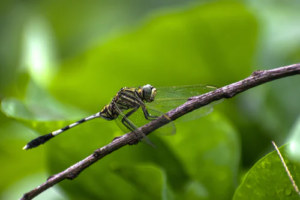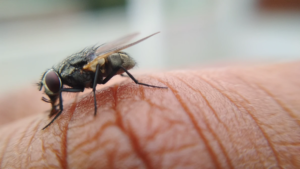
It’s summertime and that means you’re going to be outside a lot more. Bugs are out in abundance this time of year, which can lead to dangers like insect bites and stings. If you want your outdoor adventures with the family without any worries, then you need to know how to prevent these dangers from happening!
In this blog post, we will discuss how to avoid bugs and what dangers they may present.
What Is a Bite or Sting?
Insects are very useful in many ways as they break down organic matter and provide a food source for other animals. Insects are also essential to the pollination of plants, thus without them, we may not be able to grow food crops such as corn or cotton.
But unfortunately, some insects can cause us harm when we come in contact with them. These dangers usually range from stings/bites that result in an allergic reaction, or even death if left untreated (such as the black widow spider), to those which spread diseases like malaria, yellow fever, and dengue fever through their saliva injected into our bloodstream during the bite.
Some people have reactions where there is no major visible wound but still, experience swelling at the site within minutes where it had occurred or a rash that may take up to three days to present itself.
Ways to Prevent Being Bitten or Stung

Avoiding insects can be a useful way of trying not to get bitten, however, using pesticides as a repellent is not always the best way to go. How To Get Rid of Wasp Nests? You may hire a mosquito control or an animal removal company for the best and most effective ways of getting rid of these pests.
– Use bug zappers which use electric current and ultraviolet light bulbs in order to attract, stun, and kill flying insects from up to 45 feet away.
– Wear long sleeves when outside at dusk or dawn as this is the time of day when mosquitoes are most active (but avoid baiting them by wearing dark clothing).
– Avoid areas where there might be standing water such as puddles or other bodies of stagnant water like canals, ponds, marshes, etc. These places may be breeding grounds for disease-carrying mosquitoes so try your best not to walk through these types of environments if you can help it!
However, many people still have a lot of problems with mosquitoes. And when it comes to dealing with them, organic mosquito control, if you have a lawn, may be the most efficient way to beat them. Of course, there are sprays and other types of repellents you can use.
When You Should Seek Medical Attention for Your Injury
There are some situations in which you should seek medical attention for your insect bite or sting injury.
-If the wound is deep, with a wide-open hole and you are experiencing extreme pain
-If you have difficulty breathing after an encounter with insects such as bees, wasps, hornets, or yellow jackets
– If there are large welts that form around the area of contact between the victim and the bug
It’s important to keep in mind that some people may not show any symptoms at all following their exposure to bugs. This can be due to factors such as age, how many bites they received from one bug (especially if it was small), previous exposure, and allergies. It is recommended by doctors that individuals who appear healthy after an insect attack (even though they may be experiencing pain) should go to the hospital.
Signs That Are Indicative of a More Serious Condition
There is always a danger of a more serious condition when it comes to insect bites and stings. While most instances will resolve on their own without the need for intervention, there are some signs that may indicate the severity of an individual’s reaction is greater than usual.
– Redness: Insect bites often cause redness around the wound site, but if the area becomes swollen or starts to blister then this could be indicative of a dangerous allergic reaction. Seek medical treatment immediately if you have any suspicion that your injury might be severe enough to require emergency care.
– Swelling: In addition to the swelling, in general, being a bad sign after an insect bite or sting, swelling in certain parts of the body can also indicate trouble ahead. The areas with potential danger include hands, feet, and the face.
– Swollen lymph nodes: The body’s lymph system can become inflamed or swollen after an insect bite, and if this is accompanied by other symptoms then it could be a sign of infection. Seek medical care immediately.
– Fever: A fever (temperature over 100 degrees) may indicate the presence of bacteria in the wound site that requires treatment with antibiotics to avoid becoming infected.
How to Treat Common Bites and Stings at Home
It is not very difficult to treat bites and stings at home, however, it is important to know the dangers associated with them.
You can take a cool bath or apply an ice pack on the area that has been bitten for about 20 minutes to reduce pain and swelling.
For bee sting first aid you will need: vinegar, baking soda (or washing up liquid), dish soap, cold water bottle – mix two teaspoons of either baking powder or washing-up liquid in a glassful of water then add one teaspoon of white vinegar; this should be left out overnight before using. You could also use half a cup each of sugar and salt instead if these are easier to find where you live; stir until dissolved then dissolve five drops of tincture camphor oil into the solution.
You should take ibuprofen or paracetamol to reduce pain and swelling, drink plenty of fluids in order to avoid dehydration, and rest as much as possible.
It is important not to scratch the area that has been bitten; this could lead to an infection. If you do happen to start scratching then try using a topical antihistamine cream or lotion.
If there are any signs of infection such as redness accompanied by fever or pus-filled blisters then it would be advisable in your doctor’s opinion on antibiotics.
If you have any concerns about your injury after reading this blog post, please seek medical attention. The best way to treat a bite or sting is by using the tips in this article and resting for a few days if needed. It’s important that we understand how our bites and stings can differ from one another so that we know what treatment method will be most effective. And remember – never attempt to remove embedded stingers on your own! Contact pest control services to get rid of these bugs at home.







